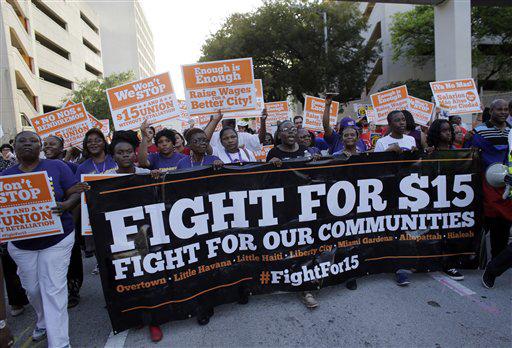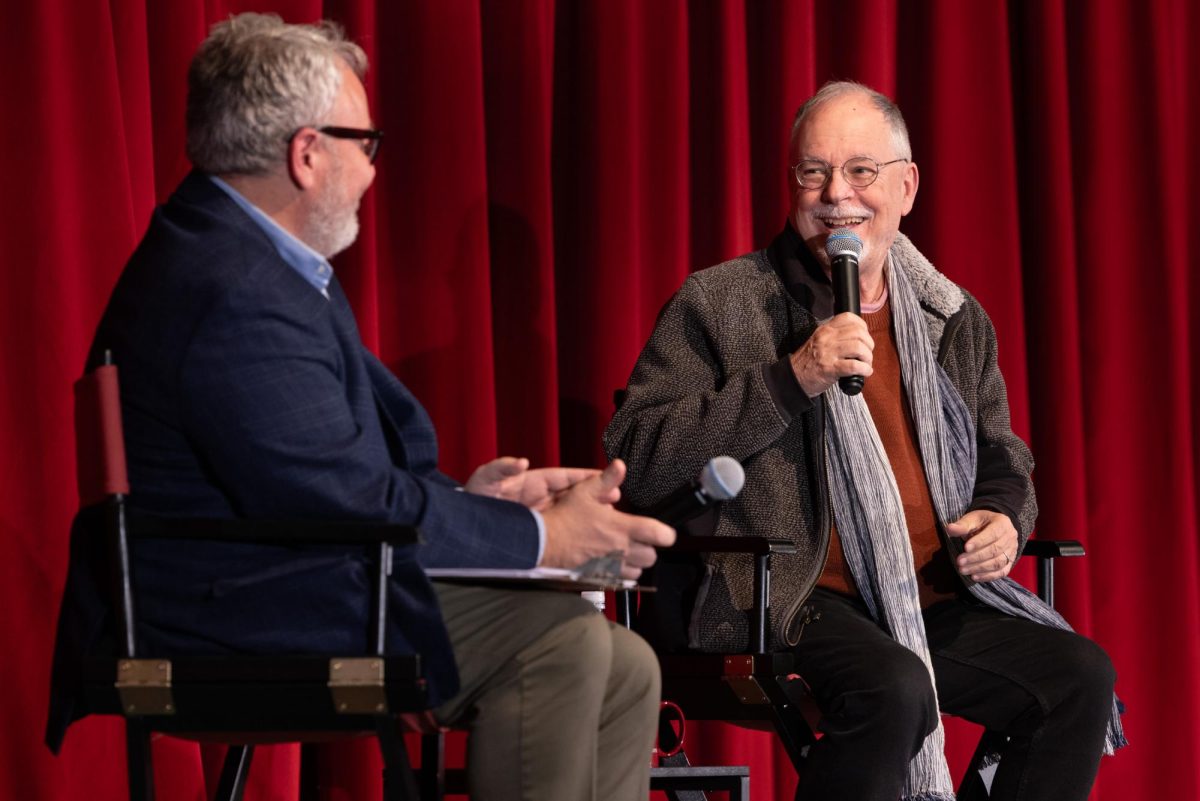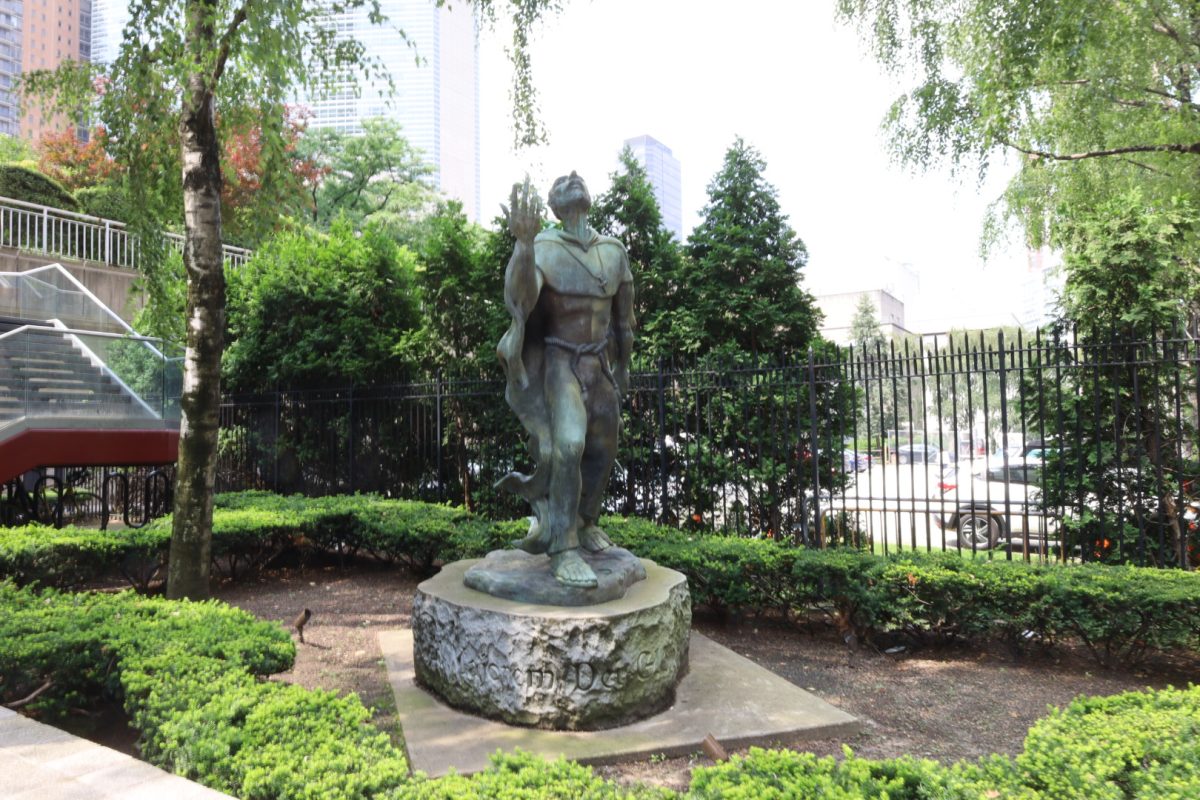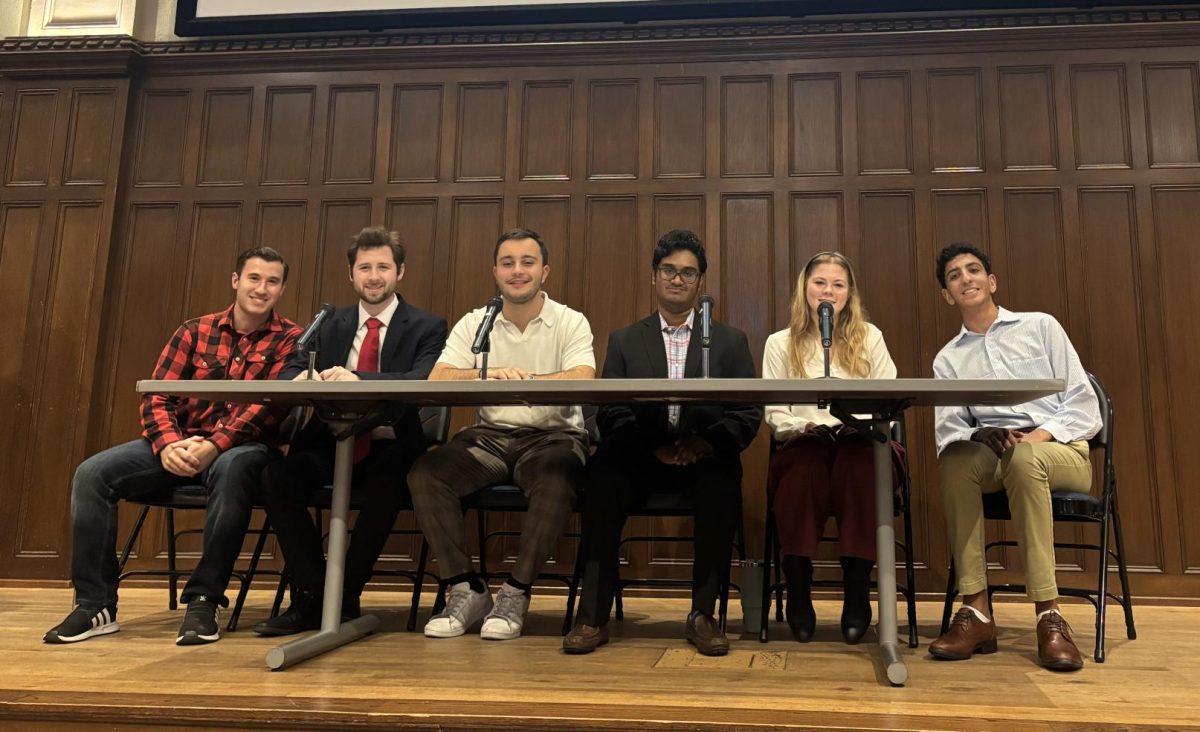
Update: This article includes the most recent statistics regarding adjunct salary information at Fordham, and so appears different from its print edition, which appeared on the front page of the April 22 edition of The Fordham Ram.
By Laura Sanicola
Fordham recently witnessed certain trends in community activism. The overwhelming majority of the undergraduate population did not vote in the latest USG elections. Several student government positions went uncontested, with seats left unfilled after the election.
However, this year has also seen pockets of activism from small but concentrated members of the Fordham community. Students marched through the streets of Manhattan for health care reform and gender equality and faculty members wrote to the president of the university in which they called upon him to repair the “moral fabric” of Fordham. The latest development is surge of activism among student organizers and adjunct professors rallying for higher wages.
On April 15, adjunct faculty and supporters arrived from a Brooklyn wage protest and stood amid the hundreds of students waiting in line for Under the Tent tickets outside of McGinley. They began handing out flyers with staggering statistics — among them, that one in five part-time faculty members live below the poverty line.
“The quality and future of higher education — certainly at Fordham, but, beyond that, since this is a national problem in the entire country where this sort of arrangement — the reliance on a majority of underpaid and otherwise badly supported adjunct faculty, mostly part-time, has become the norm,” said Fordham adjunct Alex Trevethik.
The faculty has organized itself under an advocacy campaign of the Service Employees International Union (SEIU) called “Fordham Faculty Forward,” one of the hundreds of grassroots Faculty Forward campaigns at institutions of higher education.
In its mission statement on the SEIU website, Faculty Forward lists three goals: (1) that adjuncts receive $15,000 per course in total compensation — an admittedly bold demand, total compensation including both salary and benefits, (2) to target “bad actors” in for-profit higher education that it claims “[saddles students] with crushing debt without delivering the quality education students deserve, and (3) to make quality higher education affordable and accessible for all students.”
Trevithik is one of approximately 650 adjunct professors employed at Fordham and an activist working for adjunct rights and improvement.
“I, and other adjuncts, are distressed at what we consider unacceptable working conditions at Fordham, and think, moreover, that they’re not only bad for us but they’re bad for students as well and not at all in line with Fordham’s mission and/or Jesuit and basic Catholic social teachings in regard to fair treatment of labor,” Trevithik said.
He explained that the current drive to form an adjunct union at Fordham is to negotiate better working conditions, pay and related benefits, and therefore be able to offer more time and attention to their students, as they deserve “which after all is the core mission of any institution of higher learning,” Trevethik adds.
Trevethik states that part of the mission of Faculty Forward is to garner support from the university’s president. As of Monday night, the dean of faculty has not immediately responded to a request for comment.
The university has provided data on its adjunct program, however.
Currently, for a standard undergraduate course meeting for three hours per week, Fordham University says it has a minimum pay of $3,900. Depending on the professor’s experience and credentials, that number can reach $5,000 per course.
An adjunct position at Fordham includes three hours of teaching, four hours of preparation and grading, as well as two office hours per week. This adds up to nine total hours per course per week, the equivalent of $28 per hour over a 15-week semester.
Adjuncts at Fordham teach a maximum of two courses, or 18 hours per week. Most teach two days per week here.
“What adjuncts earn in a year overall is difficult to say, because so much depends on what other sources of income they may have,” states university documentation provided to The Fordham Ram by Christopher Rodgers, dean of students. “Many of Fordham’s adjuncts are professionals in the New York area who teach on the side; others may have courses that they teach at other schools.”
Fordham, according to the documentation, “uses adjuncts to offer students instruction from professionals working in the relevant fields, and to give the University flexibility in course scheduling, release time for tenure and tenure-track faculty, and curriculum offerings.”
According to the Faculty Senate minutes from February 2015, the percentage of tuition and fee revenue that was expended on the salaries of tenured and tenure-track faculty from 2007-08 was approximately 16 percent, and in 2013 and 2014, the salaries of tenured and tenure-track faculty represented approximately 14.8 percent of the University’s tuition and fee revenue.
However, adjunct professors only received 2.2 percent of the university’s gross tuition and fee revenue in 2007, a number that has remained relatively stagnant throughout the past eight years. In 2015, the data projects that this percentage will drop to 1.9 percent.
For a university that employs over 600 adjunct professors, the April 15 event was relatively small in size — attended by a maximum of 20 faculty and organizers at any given time throughout the 11 a.m. to 2 p.m. protest. Hannah Jopling, an adjunct in the anthropology department, believes that this can be explained for a multitude of reasons.
“We are invisible to each other on campus as many departments don’t list us, and we were not sure the administration would provide us a list if we asked,” Jopling said. “So we have been reaching out to other adjuncts slowly as time permits. Many of us work at one to three other schools and have to leave after class to teach elsewhere. Some of us are scared. Others are finishing dissertations, working on research or writing books and have limited time to meet as a group.”
She explained further that a group of adjuncts has been meeting informally for a year trying to reach out to other adjuncts to discuss their situation at Fordham. Nationwide, one in four adjuncts is on some sort of public assistance.
According to Joplin, Fordham professors in attendance admitted that their salary is about $3,800 per course taught, which does not include benefits, or oftentimes, even an office. Joplin wanted to know where the rest of the money is going. “How many students in one class cover that cost — and what happens to the money Fordham makes off of us from the rest of the students?”
Jopling commended the university for its Feerick Center on Social Justice and its recently-formed Peace and Justice Studies program so that undergraduates can learn about these topics. “But it seems to me that Fordham should remedy the social injustices that are taking place on its campuses, namely its exploitation of its adjuncts,” she said.
“Why not raise their salaries and give them benefits? Why not become a model of social justice instead of social injustice for adjuncts that other academic institutions can emulate?”
The adjunct rally coincided with national protests held by tens of thousands of low-wage workers in what is being called “the Fight for 15,” that is, the fight for $15 an hour minimum wages. The movement, which took place in over 200 American cities on Wednesday, is the most striking effort to date in a two-and-a-half-year-old labor-backed movement that is testing the ability of unions to succeed in an economy populated by easily-replaceable service sector workers.









































































































































































































kam wan • Oct 13, 2016 at 10:30 pm
Excellent commentary – Coincidentally , others are searching for a HI Uncontested Divorce Packet With Children , my business saw a template document here
https://goo.gl/nXTjOa